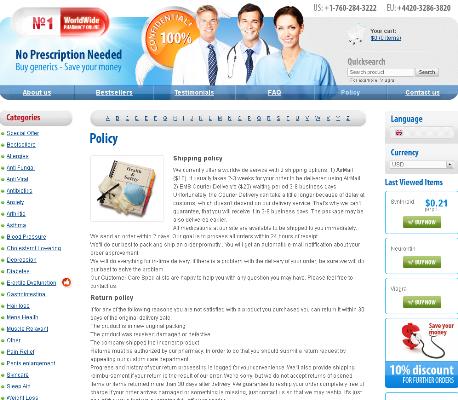Keflex for Pediatric Use: Safety Considerations
Understanding Keflex: What It Treats in Children
Keflex, known generically as cephalexin, is an antibiotic belonging to the cephalosporin class. In pediatric medicine, it is commonly prescribed for bacterial infections such as ear infections, strep throat, and skin infections. By inhibiting the formation of bacterial cell walls, Keflex effectively neutralizes the infection, ensuring a speedy recovery in young patients.
| Condition | Common Use in Pediatrics |
|---|---|
| Ear Infections | Frequently used |
| Strep Throat | Commonly prescribed |
| Skin Infections | Regularly administered |
Given its broad spectrum of action and relatively mild side effect profile, Keflex is a reliable option for treating a variety of bacterial infections in children. However, its efficacy depends on proper diagnosis and adherence to the prescribed dosage.
Appropriate Dosage of Keflex for Pediatric Patients

When administering Keflex to pediatric patients, it is crucial to adjust the dosage based on the child's weight and the type of infection being treated. Generally, the recommended dosage ranges from 25 to 50 mg per kilogram of body weight per day, divided into multiple doses. It's essential to follow the doctor's prescription carefully and complete the entire course of the antibiotic, even if the child begins to feel better before the medication is finished.
Failing to adhere to the recommended dosage can lead to incomplete treatment and potential resistance to the antibiotic. Parents should measure the liquid form of Keflex accurately using a proper measuring device to ensure their child receives the correct amount. Consulting the pediatrician for the exact dosage and any needed adjustments is vital to safeguard the child's health and treatment efficacy.
Common Side Effects of Keflex in Kids
When children take Keflex, they may experience some side effects. The most commonly reported issues include gastrointestinal symptoms like nausea, vomiting, and diarrhea. These symptoms occur because antibiotics, including Keflex, can disrupt the natural balance of bacteria in the stomach and intestines. In some cases, children might also experience mild skin rashes.
It's essential for parents to monitor their children closely while they are taking Keflex. While most side effects are mild and resolve on their own, some may persist or worsen. If a child exhibits more severe symptoms such as strong abdominal pain or significant skin reactions, it’s crucial to consult the pediatrician promptly.
Recognizing Allergic Reactions to Keflex

When a child is prescribed Keflex, it's crucial for parents to know the signs of an allergic reaction. Common symptoms include rash, itching, and swelling, particularly around the face and throat. In more severe cases, your child may experience difficulty breathing or swallowing.
Prompt recognition and response are essential. If any of these symptoms appear, discontinue the medication immediately and seek medical attention. It can be life-saving to act quickly, as allergic reactions to antibiotics like Keflex can escalate rapidly. Inform your pediatrician about any adverse effects.
Interaction of Keflex with Other Medications
When administering Keflex to children, it's crucial to be aware of potential drug interactions. Both prescription medications and over-the-counter remedies can affect how Keflex works, altering its effectiveness and potentially leading to adverse reactions. For instance, antacids containing aluminum or magnesium can decrease the absorption of Keflex, diminishing its efficacy in treating infections. Likewise, Keflex may amplify the effects of blood thinners like warfarin, raising the risk of bleeding complications.
Common Medications Interacting with Keflex
| Medication Type | Effect on Keflex |
|---|---|
| Antacids | Decrease absorption |
| Blood Thinners | Increase risk of bleeding |
Always consult your pediatrician before combining Keflex with other treatments to ensure optimal safety and health outcomes for your child.
When to Contact Your Pediatrician about Keflex
Navigating your child's health can be challenging, especially when they're prescribed medications like Keflex (cephalexin). It's essential to know when to seek your pediatrician's advice. If your child shows signs of severe side effects, such as persistent diarrhea, stomach pain, or unusual tiredness, contact your pediatrician immediately. Additionally, if there is no improvement in your child's symptoms within a few days of starting the medication, it's crucial to consult the doctor.
Keep an eye out for signs of a possible allergic reaction, which include rash, itching, swelling, especially of the face or throat, severe dizziness, or difficulty breathing. These symptoms necessitate immediate medical attention. Furthermore, if your child has a history of kidney issues or other chronic conditions, discuss any concerns or unusual symptoms with their pediatrician right away.
Another important consideration is the interaction of Keflex with other medications your child may be taking. Always inform your pediatrician about any other drugs, supplements, or over-the-counter medications your child is currently using. This will help identify potential interactions and avert adverse effects.
Lastly, if you accidentally miss a dose or administer the wrong amount, seek guidance from your pediatrician to know the best course of action. Your vigilance, combined with your pediatrician’s expertise, ensures the safe and effective use of Keflex for your child's health.

